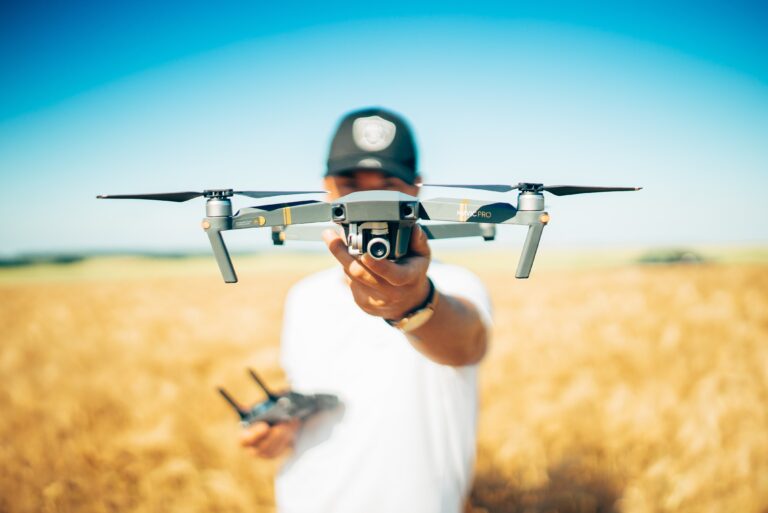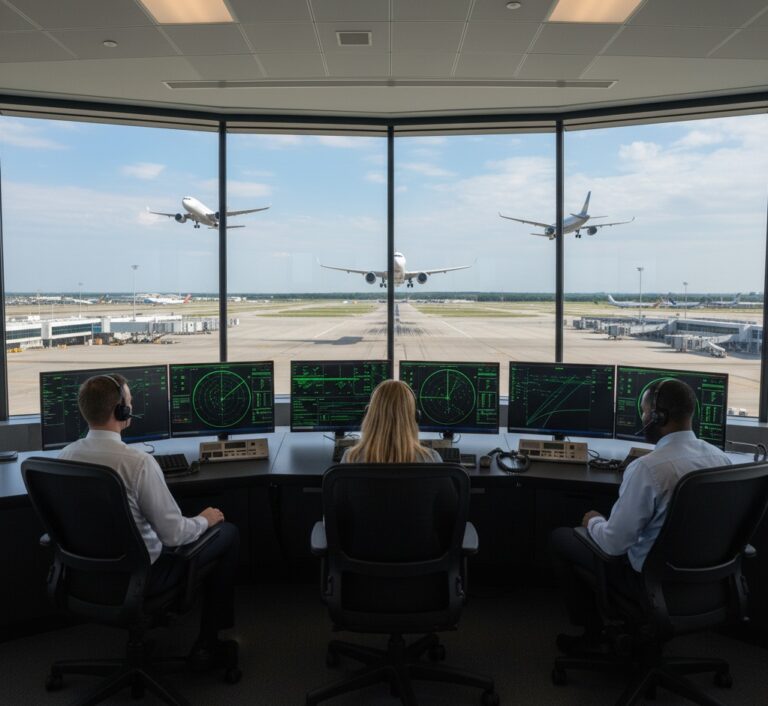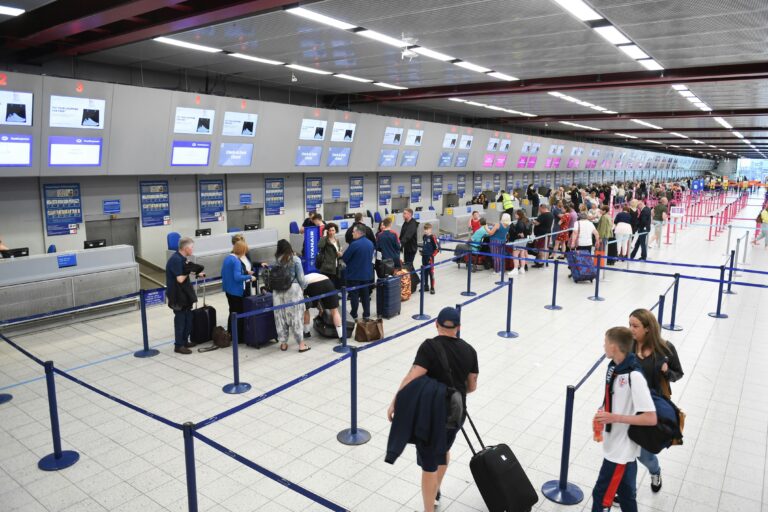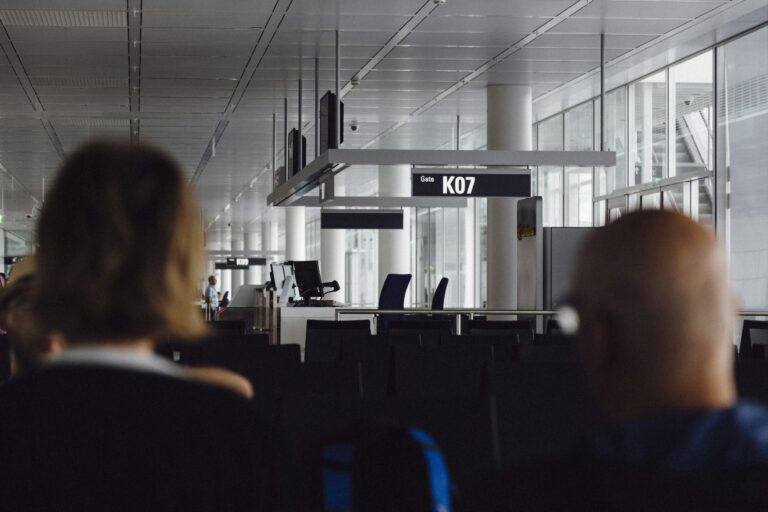The Future of Flight is Now: Automatic Take-Off and a Symphony of Support
Ladies and gentlemen, dear children, this is your captain speaking. Or is it? This familiar announcement may soon be a nostalgic echo from a bygone era of aviation. With the advent of automatic taxiing and take-off capabilities poised to join existing automatic landing systems, we are on the cusp of a revolutionary chapter in air travel. This new era promises a symphony of automation and human expertise, where critical flight phases are handled with digital precision.
At the heart of this transformation are pioneering initiatives like Airbus’s autonomous flight programs and a robust supporting cast of technologies: the Instrument Landing System (ILS), Satellite-Based Augmentation Systems (SBAS), Ground-Based Augmentation Systems (GBAS), and Controller-Pilot Data Link Communications (CPDLC). Together, they are forging the path for the first generation of truly autonomous commercial aviation.
ATTOL and its Successors: The Autonomous Revolution Takes Flight
Launched in 2018, Airbus’s Autonomous Taxi, Take-Off and Landing (ATTOL) program was a bold leap beyond traditional autopilot systems. Instead of relying on ground-based infrastructure like ILS, ATTOL’s vision-based system leverages on-board image recognition, artificial intelligence, and machine learning. In a landmark achievement in December 2019, an Airbus A350 test aircraft successfully performed eight fully automatic take-offs at Toulouse-Blagnac Airport. The aircraft seamlessly aligned itself on the runway, applied take-off power, and rotated at the precise speed for liftoff all without pilot intervention during these critical moments (Airbus, 2020).
The evolution of ATTOL continues at a rapid pace. The “DragonFly” demonstrator, a successor project, is actively testing enhanced pilot assistance technologies, including automatic landing and taxiing, with an unwavering focus on enhancing safety and reducing pilot workload (Airbus, 2022). Furthermore, 2024 saw the launch of the “Optimate” demonstrator. This innovative program is refining automatic taxiing and pilot assistance systems by utilizing an electric truck that impeccably simulates the cockpit and runway movements of an A350, with plans for subsequent testing on an actual A350 (Airbus, 2024). Driving the intelligence behind these systems is the “Wayfinder” project by Airbus’s Acubed, which is dedicated to advancing the critical AI and data-driven facets of autonomous flight.
It’s crucial to note that these advancements are not designed to render pilots obsolete. Instead, they aim to augment their capabilities, allowing them to concentrate on strategic decision-making and mission management while automation executes repetitive procedures with unparalleled accuracy. This vision-based approach also liberates airports from exclusive reliance on ILS, paving the way for automated operations at a broader range of locations globally. The ultimate goal, a fully integrated “gate-to-gate” autonomous journey, is steadily transitioning from the realm of science fiction to a tangible reality (EASA, 2021).
The Unsung Heroes: A Robust Support Infrastructure
Fully autonomous flight is not solely dependent on onboard intelligence. A seamless and safe operation requires a constant, intelligent dialogue between the aircraft and its environment. This is where ILS, SBAS, GBAS, and CPDLC play their indispensable roles.
ILS – Instrument Landing System: A stalwart of aviation for decades, ILS provides pilots with precise lateral and vertical guidance for runway approaches, proving especially critical in low-visibility conditions. While early automatic landing systems were heavily dependent on ILS, modern autonomous platforms are progressively reducing this dependency, thanks to onboard visual and AI-based technologies (FAA, n.d.).
SBAS – Satellite-Based Augmentation Systems: SBAS enhances the accuracy and reliability of GPS navigation through satellite-based corrections. Systems like the Wide Area Augmentation System (WAAS) in the United States and the European Geostationary Navigation Overlay Service (EGNOS) have already enabled thousands of Localizer Performance with Vertical guidance (LPV) approaches, which offer ILS-like precision without the need for ground-based equipment at every runway. As of early 2024, the U.S. boasted over 4,100 LPVs serving more than 2,000 airports (FAA, 2024), with Europe having nearly 900 (EUSPA, 2024). The global network of SBAS is also expanding with Japan’s MSAS, India’s GAGAN, and emerging systems in China (BDSBAS), South Korea (KASS), and Africa (A-SBAS). Future developments for WAAS and EGNOS include dual-frequency services, promising even greater accuracy and robustness.
GBAS – Ground-Based Augmentation System: GBAS provides localized, high-precision GPS corrections from a ground station at an airport. A single GBAS unit can support multiple precision approaches across different runways, making it a more flexible and cost-effective solution than ILS. Its low-latency, high-accuracy positioning data is vital for safe and repeatable automated landings, including highly precise Category II/III landings. Supported by organizations like EUROCONTROL, GBAS is increasingly seen as a key enabler for advanced operations at busy airports (EUROCONTROL, n.d.).
CPDLC – Controller–Pilot Data Link Communications: This text-based communication system is revolutionizing the dialogue between air traffic control (ATC) and the cockpit. By replacing routine voice transmissions with standardized digital messages, CPDLC significantly reduces the risk of miscommunication and eases frequency congestion. Instructions like altitude changes or heading adjustments can be sent directly to the aircraft’s Flight Management System (FMS). In the context of autonomous flight, CPDLC is a game-changer, allowing the aircraft’s systems to directly receive and acknowledge clearances from ATC. Already a mainstay on oceanic routes, its use is expanding across continental airspace, streamlining communication and enhancing safety in increasingly busy skies (SESAR Joint Undertaking, 2022).
A New Dawn in Aviation
The synergy between the onboard intelligence of systems like ATTOL and the robust supporting infrastructure of SBAS, GBAS, and CPDLC is heralding a new era in aviation. This is not a distant fantasy but a tangible reality being tested and deployed today. The future of flight is one where human expertise is seamlessly augmented by the precision and reliability of automation, leading to safer, more efficient, and more accessible air travel for everyone.While the captain’s reassuring voice is unlikely to vanish completely, their role will undoubtedly evolve. They will become strategic mission managers, overseeing the complex automated systems that handle the intricate, moment-to-moment tasks of flying. The “gate-to-gate” autonomous journey is no longer a question of if, but when. As these technologies mature and integrate into the global aviation network, we can anticipate a paradigm shift in our perception and experience of air travel. The next time you step onto an airplane, you may well be witnessing the dawn of a truly autonomous age in the skies.
References
Airbus. (2020, January 16). Airbus successfully completes first fully automatic vision-based take-off. https://www.airbus.com/en/newsroom/press-releases/2020-01-airbus-successfully-completes-first-fully-automatic-vision-based
Airbus. (2022, October 5). Airbus’ DragonFly demonstrator tests pilot assistance technologies. https://www.airbus.com/en/newsroom/stories/2022-10-airbus-dragonfly-demonstrator-tests-pilot-assistance-technologies
Airbus. (2024, May 22). Airbus tests autonomous taxiing with its Optimate demonstrator. https://www.airbus.com/en/newsroom/stories/2024-05-airbus-tests-autonomous-taxiing-its-optimate-demonstrator
European Union Aviation Safety Agency (EASA). (2021). EASA Artificial Intelligence Roadmap 2.0. https://www.easa.europa.eu/en/downloads/132890/en
European Union Agency for the Space Programme (EUSPA). (2024). EGNOS User Support. https://www.euspa.europa.eu/european-space/egnos/egnos-user-support
EUROCONTROL. (n.d.). Ground-Based Augmentation System (GBAS). Retrieved July 12, 2025, from https://www.eurocontrol.int/gbas
Federal Aviation Administration (FAA). (n.d.). Instrument Landing System (ILS). Retrieved July 12, 2025, from https://www.faa.gov/air_traffic/nas/navservices/facilities/ils
Federal Aviation Administration (FAA). (2024). Satellite Navigation – GPS/WAAS Approaches. https://www.faa.gov/about/office_org/headquarters_offices/ato/service_units/techops/navservices/gnss/gps_waas_approachesSESAR Joint Undertaking. (2022). Controller Pilot Data Link Communications (CPDLC). https://www.sesarju.eu/solutions/cpdlc
Pictures: Pexels







